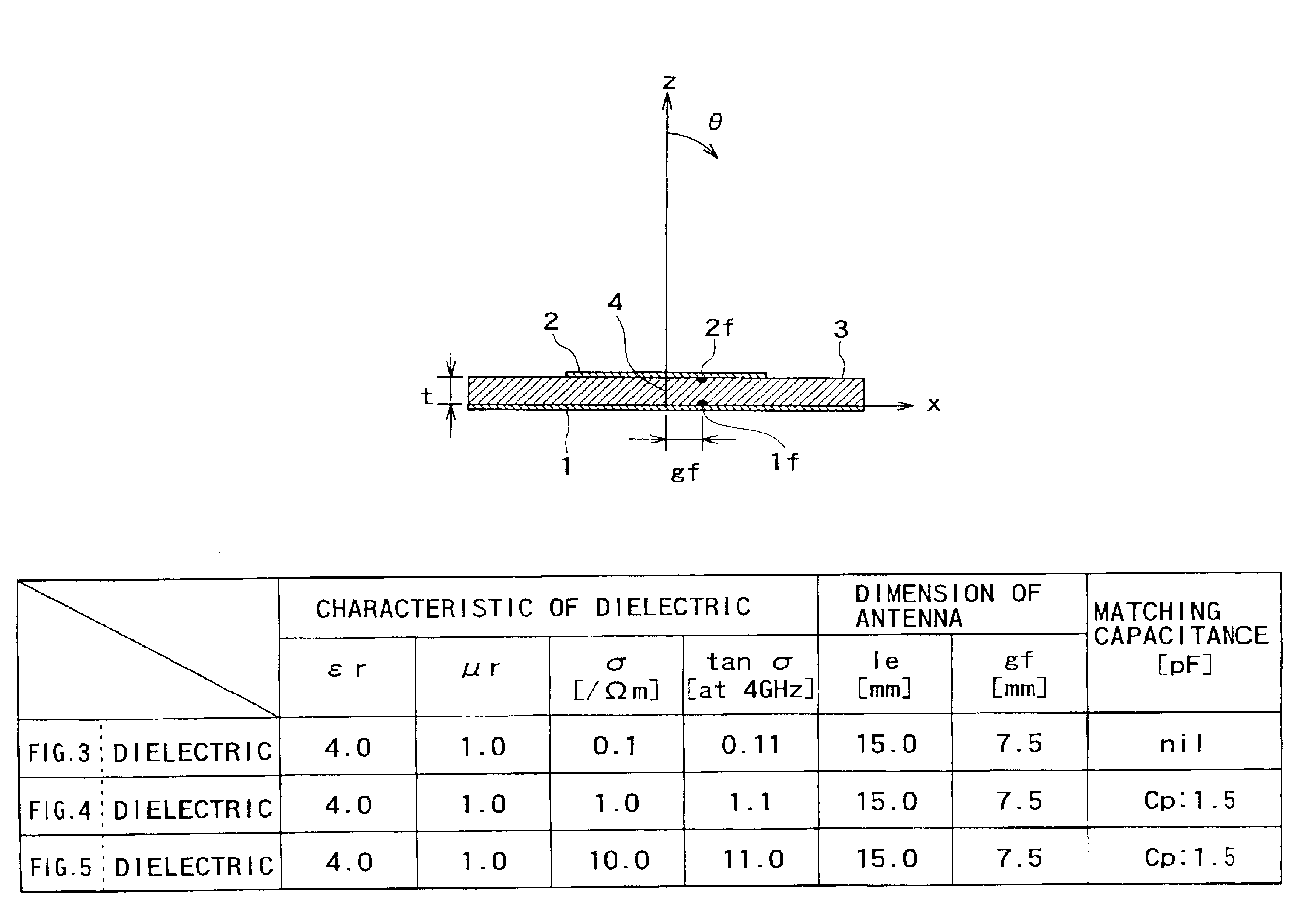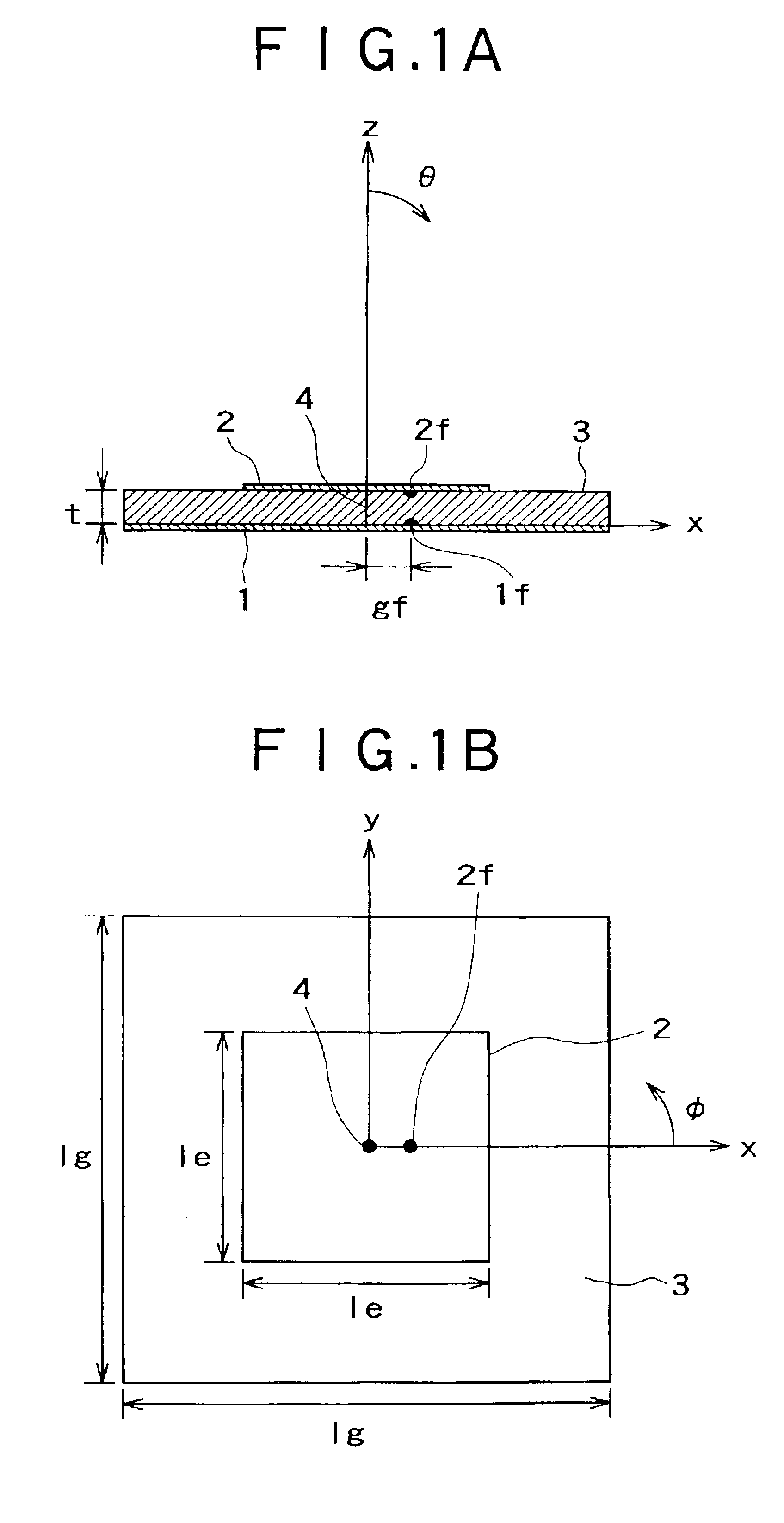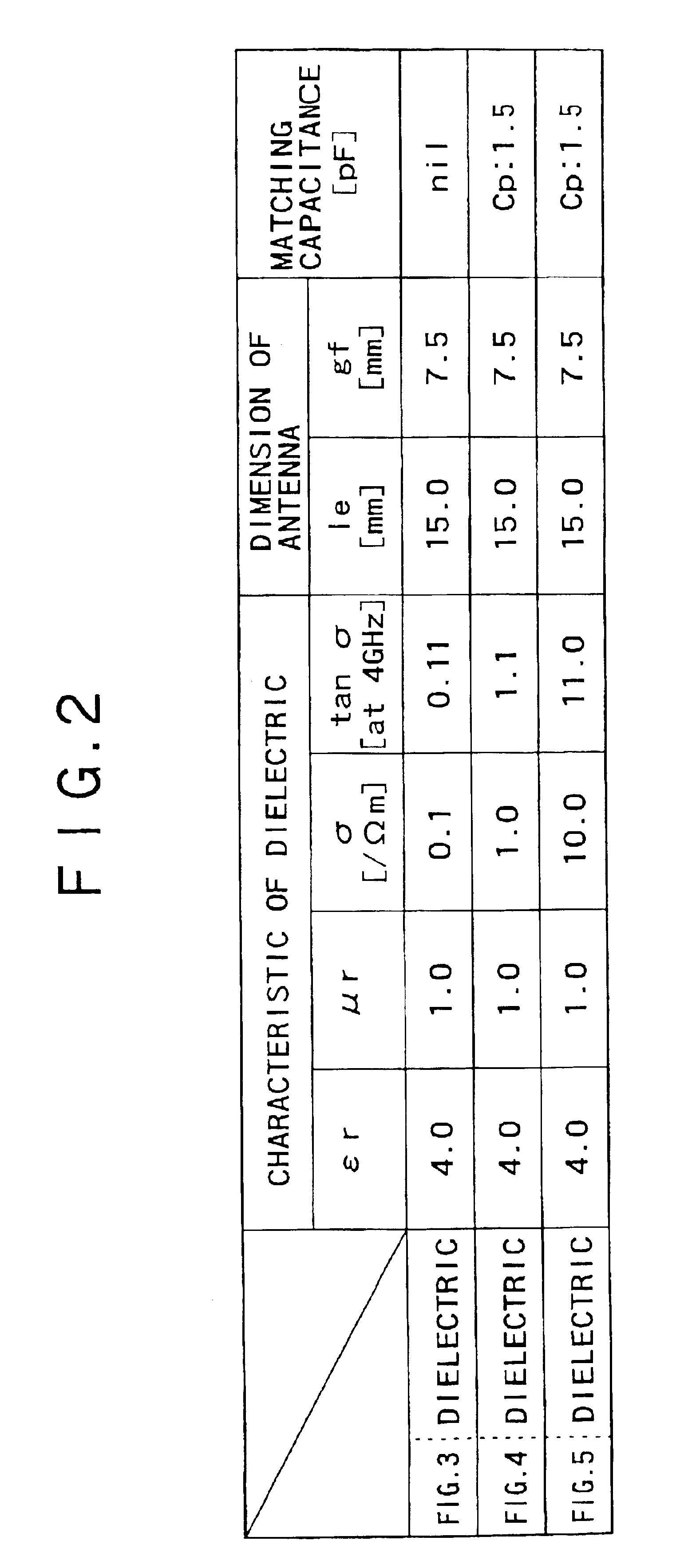Wide band antenna
a wideband antenna and wideband technology, applied in the direction of antennas, antenna details, basic electric elements, etc., can solve the problems of sharp operation bandwidth of patch antennas and unsuitable pan systems that require a wider operational bandwidth, and achieve the effect of sufficient gain and easy impedance matching
- Summary
- Abstract
- Description
- Claims
- Application Information
AI Technical Summary
Benefits of technology
Problems solved by technology
Method used
Image
Examples
first embodiment
[First Embodiment]
[0038]The wideband antenna of the first embodiment is created with attention to the conductivity a of a substance being interposed between a reference conductor and a radiation conductor. The first embodiment uses the substance whose conductivity σ is within a specific range of comparably large conductivities. The antenna appropriately leaks signals into the substance between the reference conductor and the radiation conductor to bear a loss, and thereby reduces reflected waves to lower the standing wave ratio, and to widen the operational bandwidth.
[0039]The wideband antenna of this invention is applicable to various antennas that are formed with a substance having a specific conductivity interposed between the reference conductor and the radiation conductor. Hereunder, an example will be explained, in which the invention is applied to the so-called patch antenna.
[0040]FIG. 1 is a chart that explains a construction of the wideband antenna of the first embodiment. ...
second embodiment
[Second Embodiment]
[0057]The wideband antenna of the second embodiment is created with attention to the relative permeability μr of a substance being interposed between the reference conductor and the radiation conductor. The second embodiment uses a magnetic substance as the interposition, of which relative permeability μr is within a specific range, thereby further widening the operational bandwidth of the wideband antenna.
[0058]FIG. 6 is a chart explaining the construction of a thin-type wideband antenna relating to the second embodiment, in which FIG. 6A is a side view of the thin-type wideband antenna of this embodiment, and FIG. 6B is a top view explaining the same. As shown in FIG. 6, the thin-type wideband antenna of the second embodiment is made up in the same manner as the wideband antenna of the first embodiment.
[0059]However, the wideband antenna of the second embodiment has been created from a novel idea of using a magnetic substance instead of a dielectric substance as...
third embodiment
[Third Embodiment]
[0078]In the first embodiment, as the interposition 3 interposed between the reference conductor 1 and the radiation conductor 2, a dielectric material having the conductivity σ of about 0.1 [ / Ωm] through 10.0 [ / Ωm] is used. However, it is conceivable to use a magnetic substance as the interposition, as described in the second embodiment.
[0079]Now, a magnetic substance is used as the interposition also in the third embodiment; however, the magnetic substance interposed here is specified not only by the relative permeability μr, which is the case with the second embodiment, but also by the conductivity σ that the magnetic substance interposed between a reference conductor and a radiation conductor possesses.
[0080]That is, the wideband antenna of the third embodiment uses a magnetic substance as the interposition between a reference conductor and a radiation conductor, of which conductivity σ belongs to a specific range of comparably large conductivities. Thereby, th...
PUM
 Login to View More
Login to View More Abstract
Description
Claims
Application Information
 Login to View More
Login to View More - R&D
- Intellectual Property
- Life Sciences
- Materials
- Tech Scout
- Unparalleled Data Quality
- Higher Quality Content
- 60% Fewer Hallucinations
Browse by: Latest US Patents, China's latest patents, Technical Efficacy Thesaurus, Application Domain, Technology Topic, Popular Technical Reports.
© 2025 PatSnap. All rights reserved.Legal|Privacy policy|Modern Slavery Act Transparency Statement|Sitemap|About US| Contact US: help@patsnap.com



